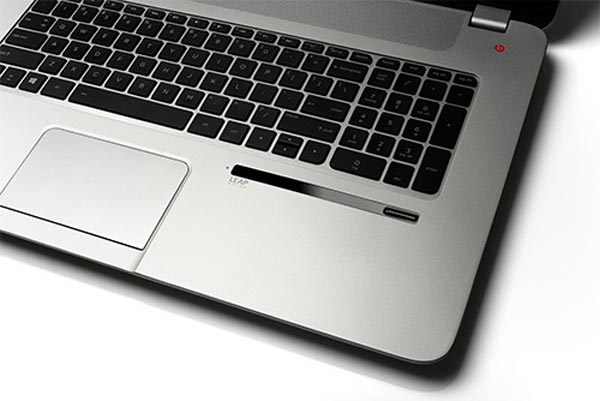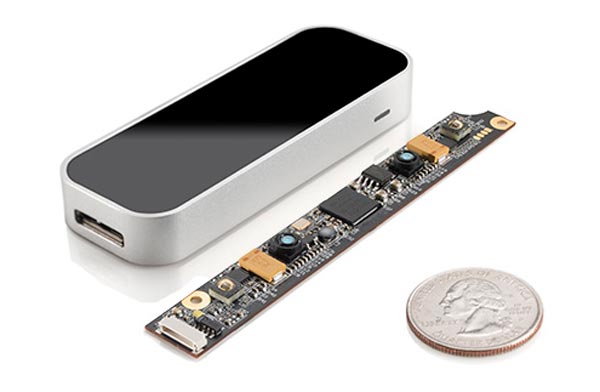HP and Leap Motion have unveiled a new laptop featuring a miniaturised built-in motion control sensor. The new laptop is called the HP ENVY17 Leap Motion Special Edition (SE). As you might guess from the name it is a big screen laptop, in fact it has a 17.3-inch full-HD display. HP has also equipped the new laptop with “the latest Intel processors and NVIDIA graphics”. This machine will go on sale (in the US) from 16th October priced at US$1049.99.

Meat and potatoes
Let us start by examining the regular specification of this new laptop before looking more specifically at the embedded motion controller. As a matter of fact HP hasn’t given us much more than general specs for the new HP ENVY17 Leap Motion SE at this time.
The default configuration for the machine, which will cost just over $1k, includes the following components; a 4th-generation Intel Core i7 CPU, 8GB RAM and a 1TB HDD. A post on the HP blog suggests that the laptop, in its base config, uses integrated graphics rather than an NVIDIA GPU but the upgrade to a graphics chip from the green team is encouraged. Also we know the screen is a 17.3-inch full HD display and sound is enhanced by Beats audio.

Embedded Leap Motion controller
Earlier in the year we heard about Leap Motion working with PC makers such as ASUS and HP and it looks like HP is the first to show off their motion controlled goods. The already small controller has been shrunk further and a new 3.5mm microsensor employed, to integrate just below the keyboard on the HP ENVY17 Leap Motion SE.
Leap Motion is keen to point out that despite the component size reductions the embedded unit offers “the same power and precision” as the regular USB dongle. Leap also has its Airspace app store installed on the new ENVY17 and has bundled five apps for free; Boom Ball, Jungle Jumper, Dropchord, Disney Sugar Rush, and Jack Lumber.













